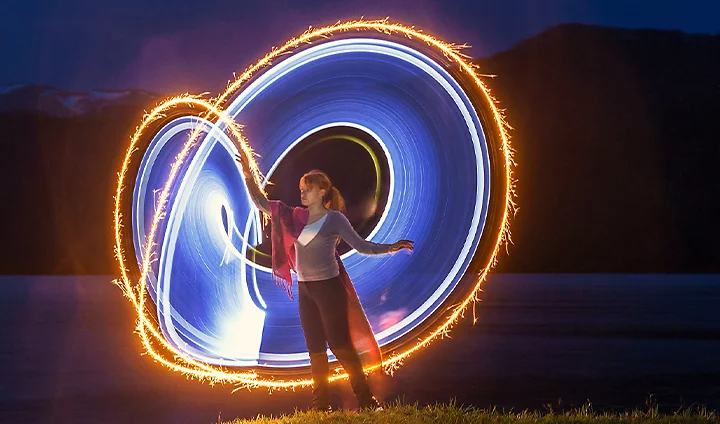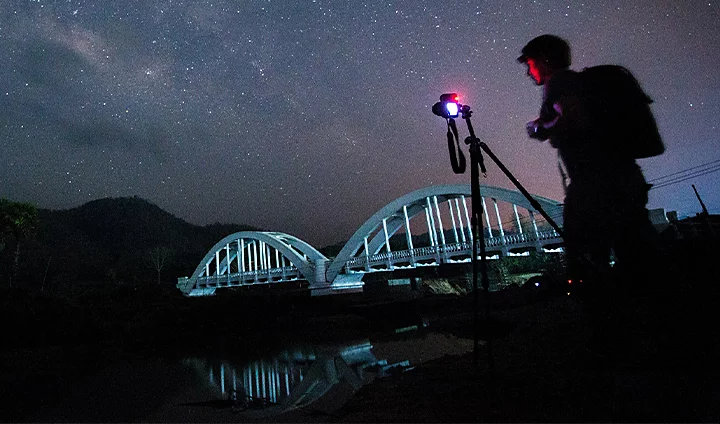Keep things steady with a tripod.
A sturdy tripod is perhaps the single most important piece of equipment a light painting photographer can have. You’ll need to keep the camera set for long periods of time and that stillness depends on a reliable tripod that won’t shift on an uneven surface or sway in the wind. Make sure your camera is stable.
Stay focused on painting with a remote shutter release.
A remote shutter button is especially useful for a light painter who’s going to spend a lot of time in front of the camera making images with light. With a remote trigger, a painter doesn’t need to rush behind the camera and potentially put a blurry shadow of themselves in the frame. Instead, they can focus on painting.
Find the right torch for light painting.
If you’re wondering what type of torch to use for light painting photography, there are many answers. And really, there is no wrong answer — you can use just about anything as a light source in light painting. Some companies sell products specifically marketed as light painting brushes, but any moveable light source will do. Small torches on a string, for example, are a perfectly fine source of light, as well as pen lights, LED lights, laser pointers, fibre optic lights, even a mobile phone torch.
You may need to dim the light of the torch. Tape a bit of parchment paper or a ping pong ball over the light to get just the right amount of illumination — it all depends on how intense the bulb is. Glow sticks are also a great low-budget way to do light painting or light drawing.
Experiment with different light sources to find out what makes the kind of light streaks you want. For advanced light painters, fire is also popular. Flaming steel wool can yield dramatic results. Be advised, painting with fire can be very dangerous, so follow safety protocols and all local laws in your area.
Light sources.
Just about anything can be used as a light source. Some companies do sell products specifically marketed as light painting brushes, but as long as you can turn something into a moving light source, it can be used to paint with light. Small torches on a string are a perfectly fine source of light. Generally you’ll need something to dim the light of the torch just a little bit, so taping a bit of parchment paper or a ping pong ball over the light source can often get you just the right amount of illumination, depending on how intense the bulb is. Glow sticks are also a great low-budget way to do light painting or light drawing. Experiment with different light sources, find out what makes the kind of light streaks you want and don’t limit yourself to just one source of light.





